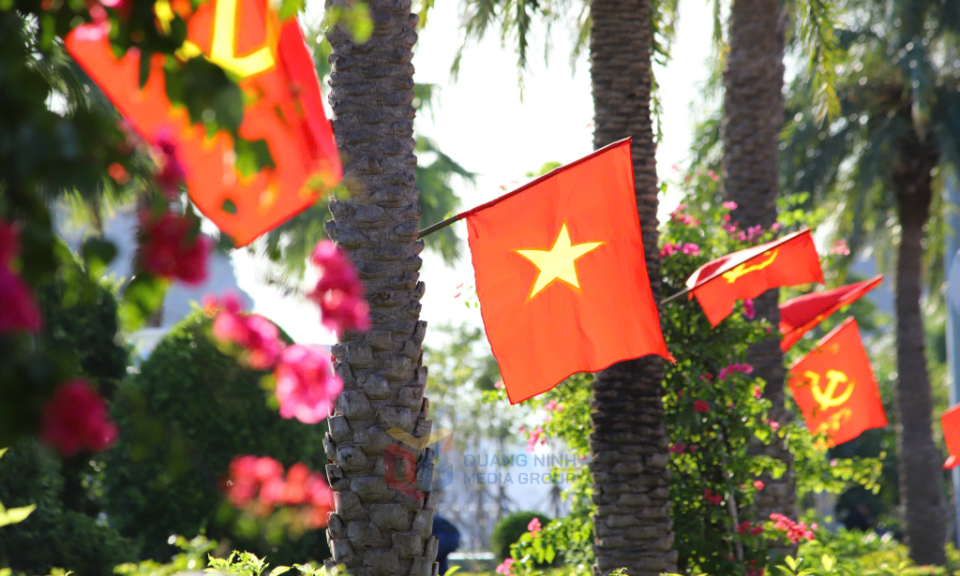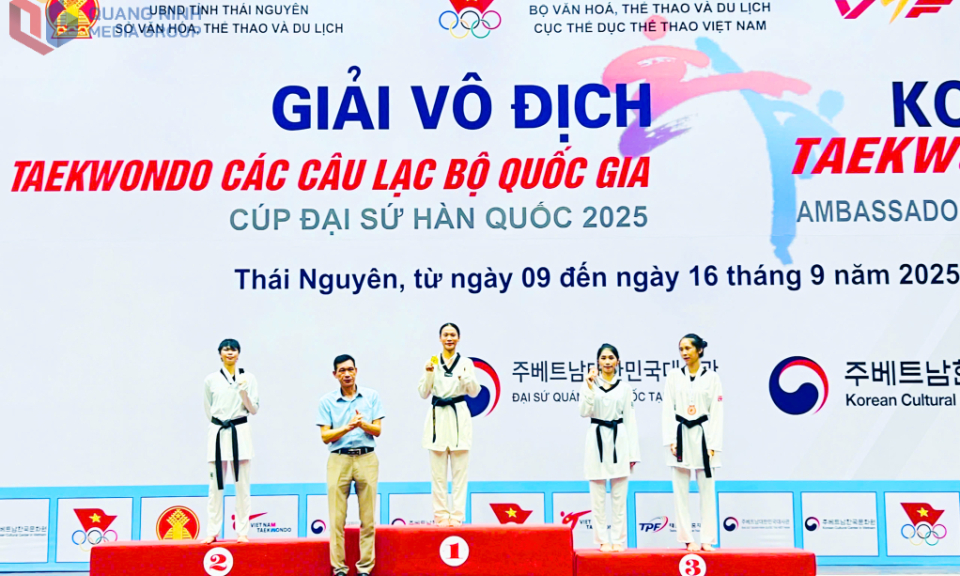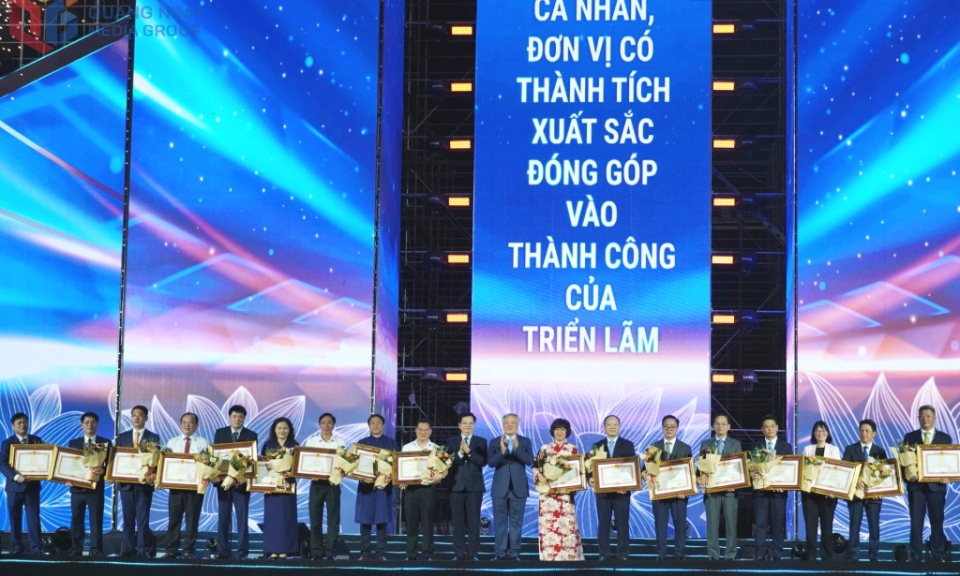A tradition of feasting: 10 Vietnamese Tet meals
At Tet, a diverse array of dishes – from sticky rice cakes and spring rolls to boiled chicken – graces family food trays everywhere, symbolizing prosperity, luck, and familial unity.
As the Lunar New Year approaches, Vietnamese households bustle with excitement and anticipation, preparing for one of the most significant and cherished celebrations of the year. Join us on a culinary journey as we explore the 10 common dishes that adorn the Lunar New Year food tray in Vietnam.
1. Banh chung/banh tet (sticky rice cakes)
Banh chung, a square rice cake, is commonly enjoyed savory in northern Vietnam, while banh tet, a cylindrical sticky rice cake and a specialty of central and southern region, can be found in both savory and sweet variations.
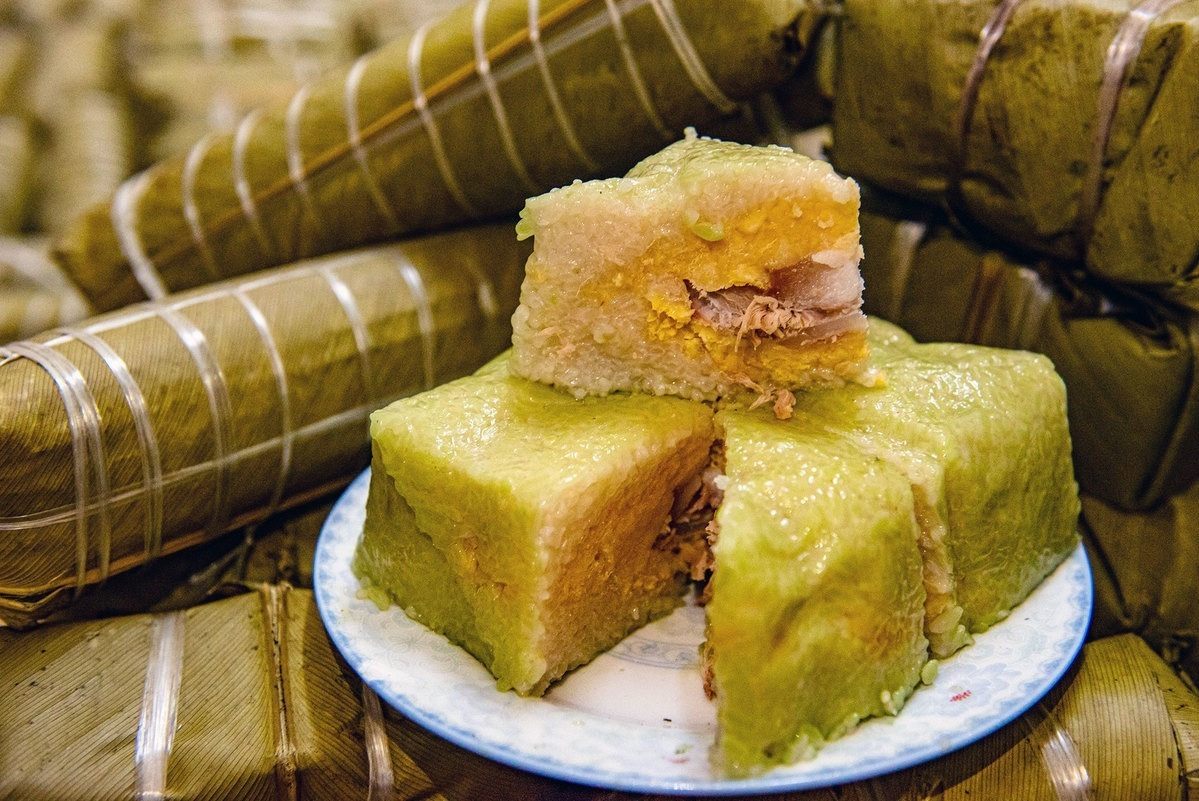
The main ingredients of both these cakes often include glutinous rice, mung beans, pork belly, and a blend of spices such as salt, pepper, green onions, and fish sauce. These ingredients are layered, wrapped in banana leaves, and boiled or steamed until cooked through.
Legend has it that banh chung was created by a Vietnamese prince, Lang Lieu, as a symbol of respect for ancestors, representing the Earth through its ingredients sourced directly from the land.

The origins of banh tet are believed to trace back to the Cham people, with the cake likely evolving through a combination of exchanging culinary practices and sharing cultural traditions between the two communities.
Another account of banh tet's origin tells of a moment during King Quang Trung's rule in 1789. In the midst of a battle against invaders, a soldier offered the king a cake as a symbol of goodwill. Moved by the gesture, King Quang Trung declared that the cake should be enjoyed during Tet, hence naming it Tet cake, or banh tet.
Banh chung and banh tet typically feature soft and slightly sticky glutinous rice complemented by a subtle herbal aroma infused by the banana leaves. The mung beans and pork contribute to a savory flavor profile, characterized by a combination of fatty and nutty notes.
2. Boiled chicken
Boiled chicken, a dish originating from Chinese cuisine, holds a significant place in Lunar New Year celebrations across Vietnam. In Vietnamese culture, roosters are traditionally favored over hens in New Year offerings. The rooster symbolizes new beginnings and the start of favorable conditions for agriculture. During Lunar New Year's Eve worship, offerings of sticky rice and boiled chicken are made, symbolizing hopes for prosperity and success in the upcoming year.
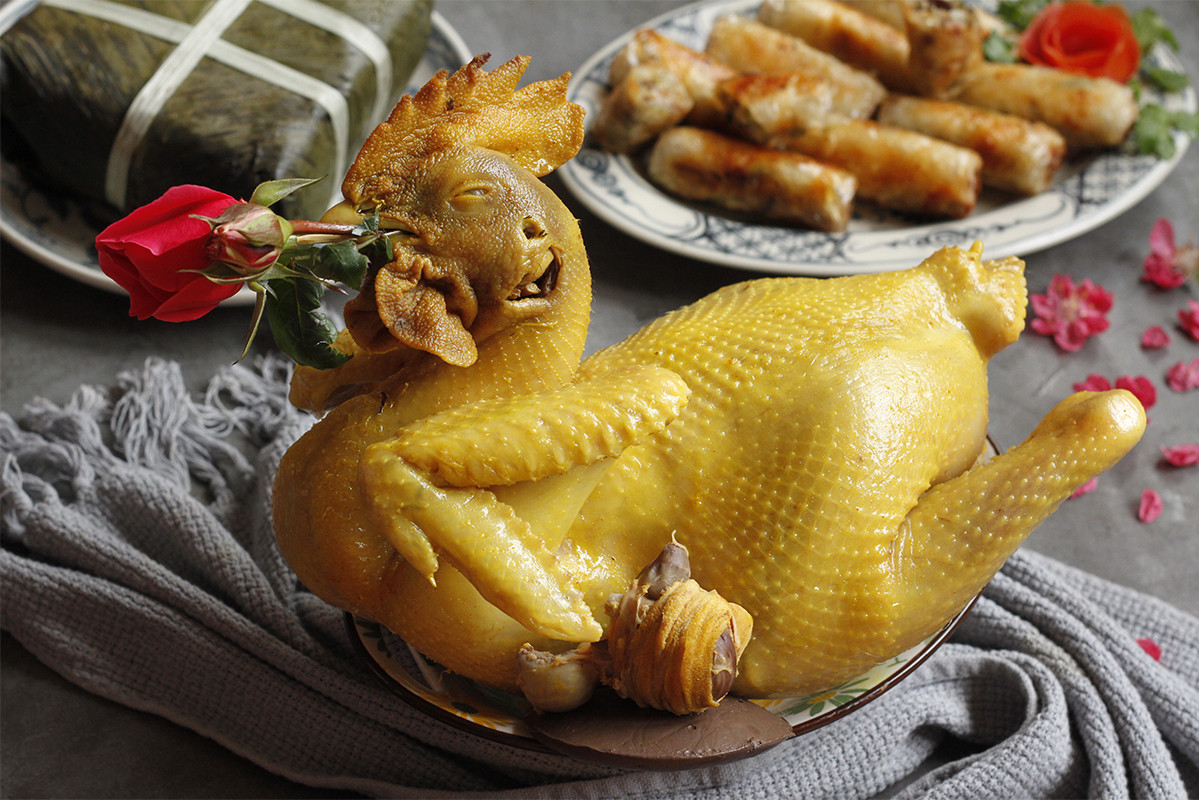
The chicken is boiled until shiny and golden, infused with aromatic flavors of ginger. Accompanied by a salt and lime dip, it's served alongside sticky rice. In Hanoi, leftover Tet ingredients, like boiled chicken, are often repurposed to prepare delicacies such as bun thang (shredded chicken noodle soup).
3. Gio lua/gio xao (Pork roll/ pork ear roll)
Pork roll, known as cha lua in the central and southern regions and gio lua in the north, is a pork delicacy commonly found in the food tray during Lunar New Year. Meanwhile, pork ear roll is a dish often enjoyed during Tet celebrations in northern Vietnam.

Pork roll is prepared by pounding the meat into a thick paste and seasoning it with various spices, starchy flour, and fish sauce. Afterward, it’s wrapped in banana leaves and steamed. The result is a pork sausage characterized by a tender texture and a subtle pink hue, accompanied by a fragrance infused by the banana leaves.
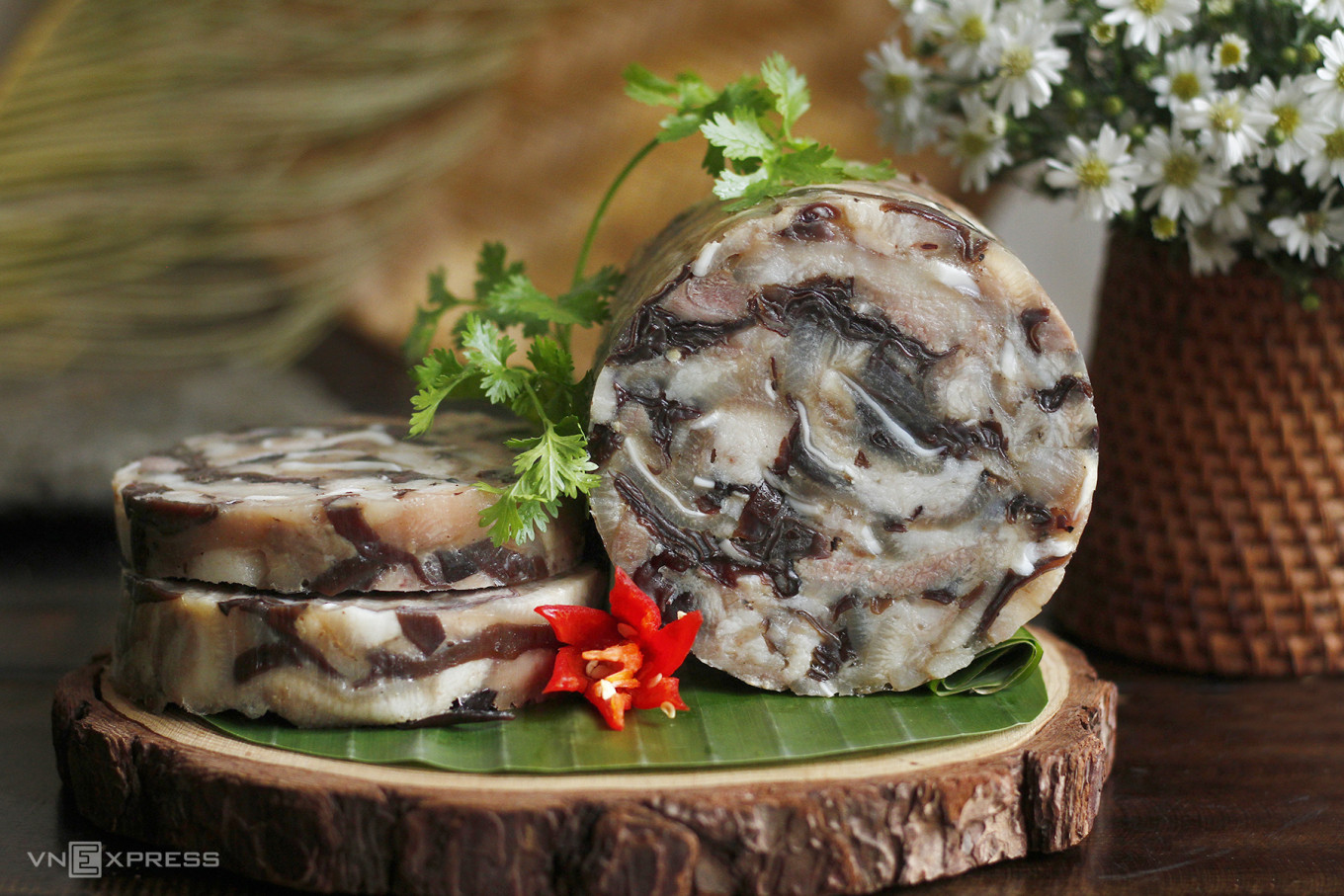
Known by two names gio xao (stir-fried pork roll) and gio thu (pork head roll), pork ear roll made from thinly sliced pork head meat, primarily ears and cheeks. Marinated with fish sauce and pepper, it's stir-fried with wood ear mushrooms until firm and golden. Wrapped in banana leaves and cooled to set, it offers a blend of textures and flavors - crunchy ear and cheek, fragrant fish sauce and spicy pepper, with a hint of subtle banana leaf aroma.
In addition to its role in Tet celebrations, both pork roll and pork ear roll are enjoyed year-round as a complement to everyday dishes.
4. Xoi gac (red sticky rice)
In Eastern culture, the color red represents happiness, luck, and goodness. During special occasions like Tet and ancestral ceremonies, people prepare a dish called red sticky rice. This dish is made by mixing sticky rice with gac fruit (sweet gourd). The rice is cooked until it's soft and fragrant. The result is red sticky rice, believed to symbolize prosperity and good fortune.
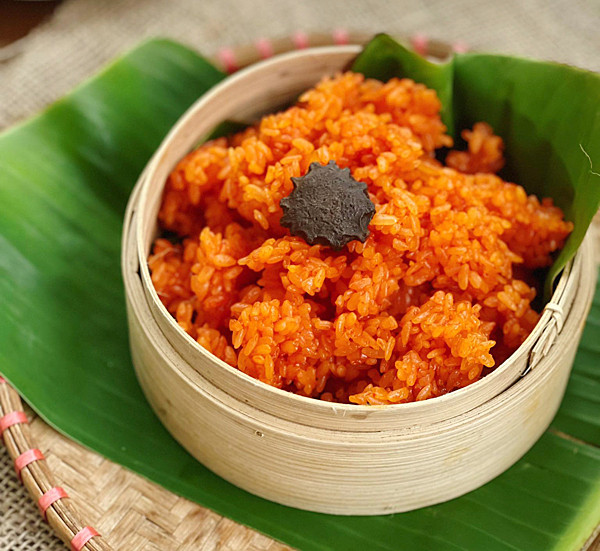
Depending on where you are in Vietnam, some people like to add shredded coconut or coconut milk in the south, while others in the north might include green beans or sprinkle sugar on top. Despite its subtle sweetness, xoi gac is commonly paired with savory dishes such as pork floss and pork roll.
5. Spring rolls
Spring rolls are known as cha gio in the south or nem ran in the north. Filled with a savory mixture of pork, shrimp, carrots, wood ear mushrooms, glass noodles, and bean sprouts, then wrapped in rice paper. The rolls are fried to perfection, resulting in a golden hue and a crispy exterior.
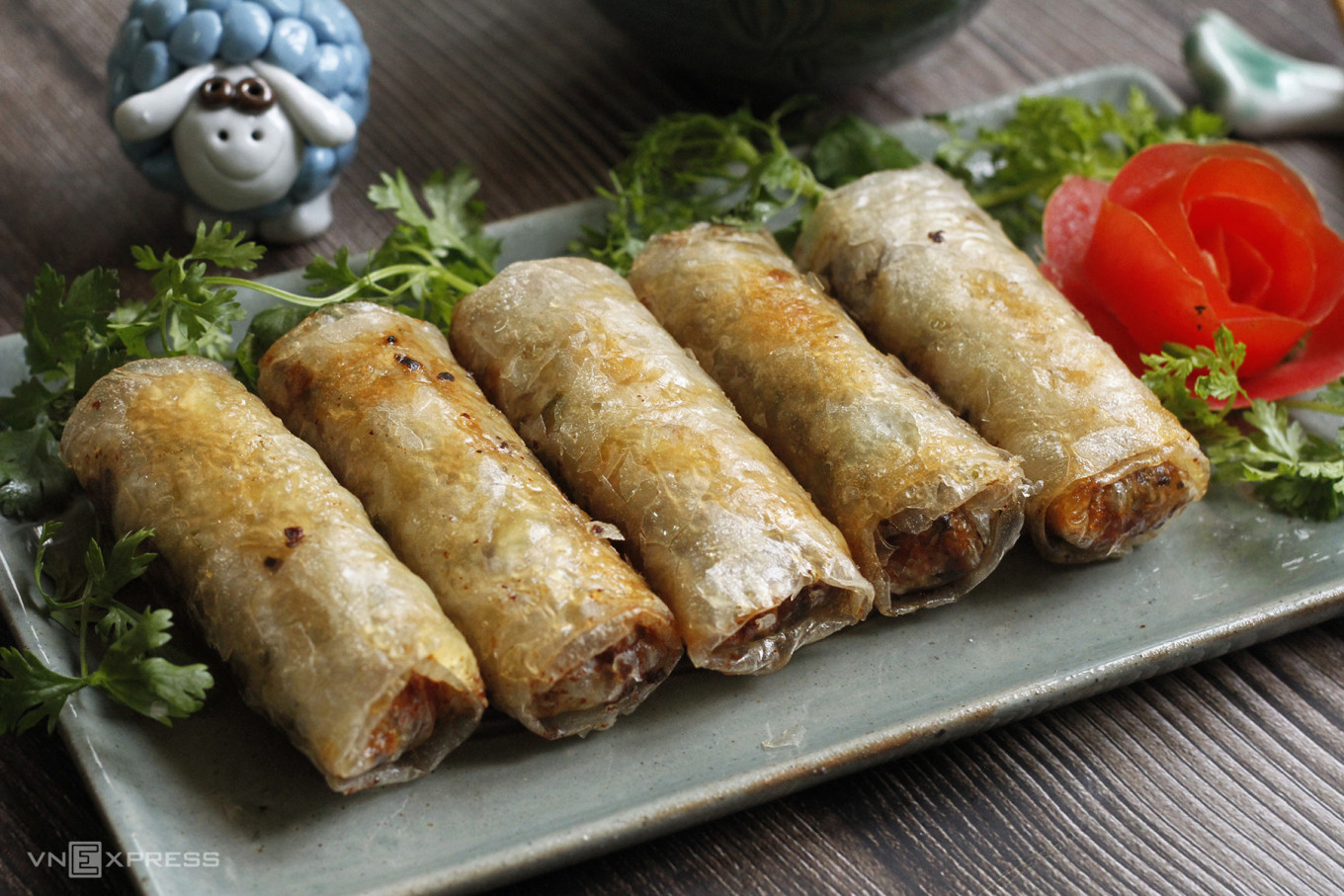
The northern rendition of spring rolls typically features more vegetables encased in a thin rice paper skin, whereas the southern variation has a thicker outer layer with a heartier meat filling, often complemented by shredded taro.
The origin of spring rolls is still a bit unclear, but there are a few ideas about where they came from. Many believe that they've been around in Vietnamese cooking for a long time. People up in northern Vietnam might have come up with them as an easy-to-eat dish that lasts a while, especially during wartime.
Another prevalent theory suggests that spring rolls may have been influenced by similar dishes in Chinese cuisine. As part of cultural exchange, this dish likely made its way into Vietnamese culinary practices, where it was adapted to local tastes. The result is a dish that reflects the fusion of cultural influences in Vietnamese cuisine.
These fried delights are often served alongside herbs and a sweet-sour fish sauce. Typically served as an appetizer, they can also be enjoyed with vermicelli or rice.
6. Braised pork with duck eggs
Braised pork with duck eggs is a Tet dish widely enjoyed in southern and central regions. Prepared with pork belly, garlic, shallots, soy sauce, sugar, and fish sauce, braised pork is simmered in a blend of coconut water, garlic, and shallots. Slow-cooked alongside duck eggs until tender, it's commonly served alongside rice or pickled mustard greens.
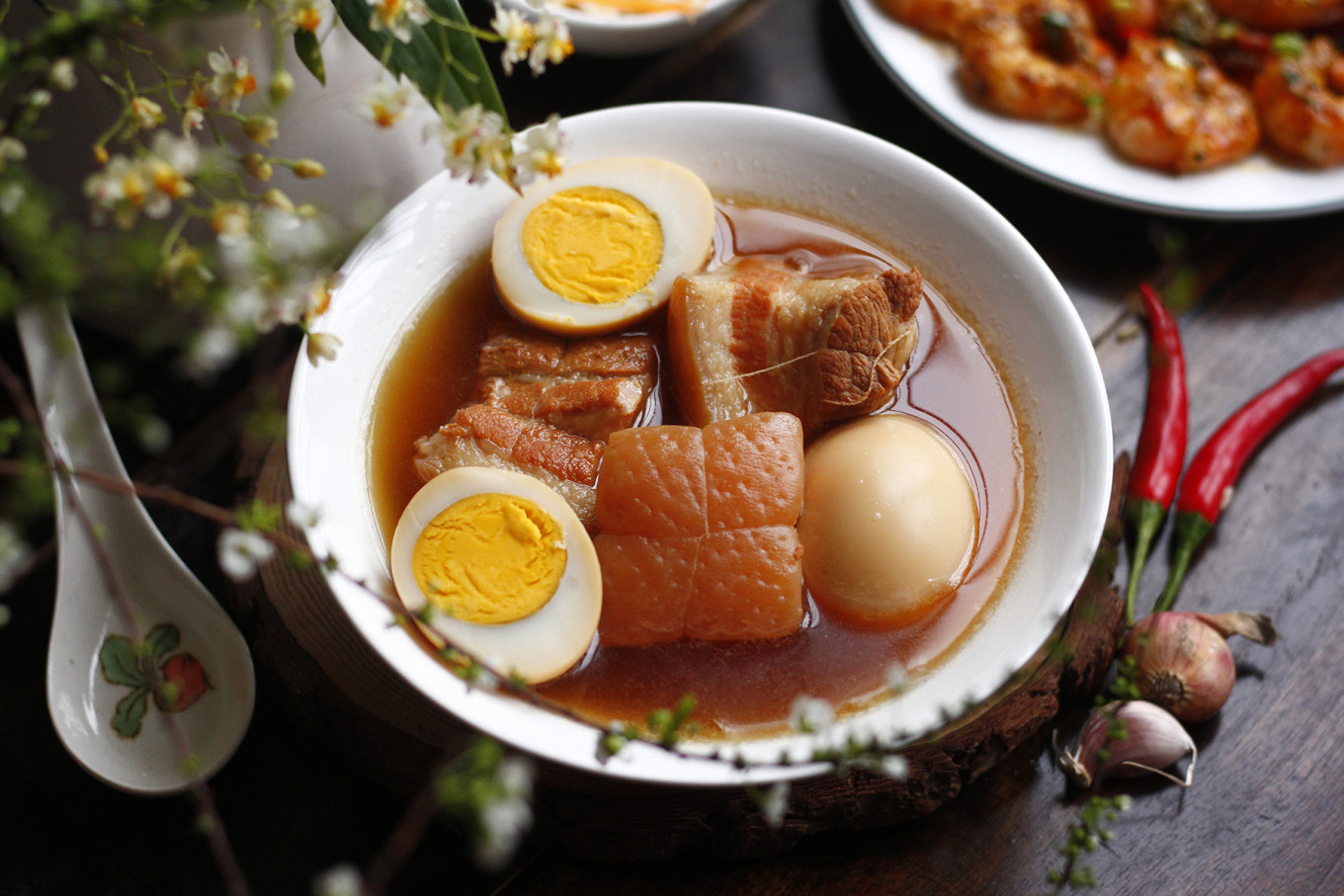
In a pot of braised pork with duck eggs, the juxtaposition of square meat pieces and round eggs symbolizes harmony and balance, reflecting the concept of yin and yang. The round eggs, representing fertility, symbolize wishes for a joyful New Year and a family blessed with abundance.
7. Stuffed bitter melon soup
Canh kho qua, or stuffed bitter melon soup, is another dish enjoyed during Lunar New Year in southern regions of Vietnam. It's made by filling bitter melons with a mixture of ground pork, fish, mushrooms, and spices, then simmering them in broth until tender. The name kho qua, or bitter melon, explains the wish for all kho, sorrows and misfortunes of the old year, to qua - pass, to receive good news in the new year.
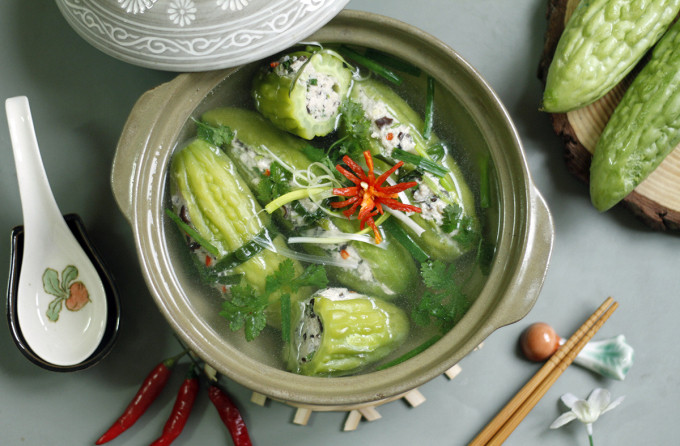
This dish is not only symbolic but also offers numerous health benefits. Stuffed bitter melon is known for its cooling properties and high fiber. During Tet, the weather in southern Vietnam can be quite hot. Enjoying a bowl of stuffed bitter melon soup provides a refreshing respite from the heat, offering a cooling effect and balancing out the richness of other festive dishes.
8. Jellied pork
Jellied pork is a popular dish in northern Vietnam, especially during the colder months and Lunar New Year celebrations. Made from pork leg and stir-fried pork skin with mushrooms, it's served cold and develops a jelly-like texture due to the collagen in the pig's skin.
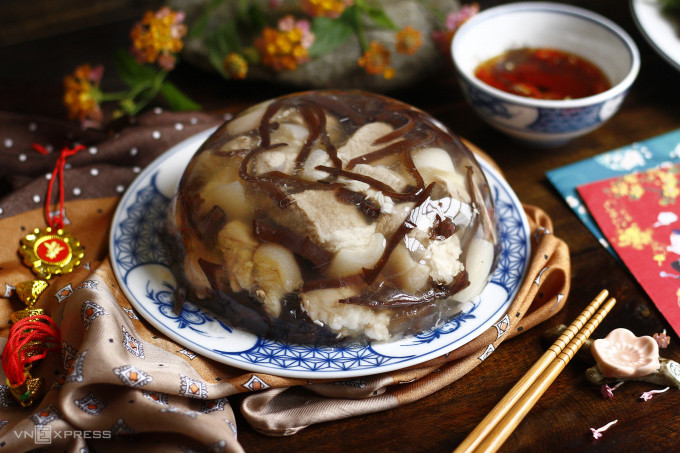
It is said that this dish started when stewed pork leg soup was left out in the cold and accidentally froze, turning into a special treat. Now, every Tet, families in the north make this dish to enjoy during the holiday.
Jellied pork is perfect for eating cold, making it easy to store in cold weather or fridges without needing to heat it up again. It is often served with a side of spicy fish sauce to enhance its flavor.
9. Bamboo shoot soup
If stuffed bitter melon soup reigns supreme during Tet feasts in the southern regions, then bamboo shoot soup serves as its counterpart in the north. The soup symbolizes warmth and togetherness during the festive season. In addition to its cultural importance, bamboo shoot soup is valued for its nutritional benefits, rich in vitamins and fiber.

The soup is made with a variety of bamboo shoots including fresh bamboo and dried bamboo shoots. The dried bamboo shoots are soaked in water at least three times to reduce their strong odor. The soup is slow-cooked with pork knuckles to create a rich broth.
10. Dua hanh and cu kieu (pickled leeks and shallots)
Pickle dishes like dua hanh (pickled shallots) and cu kieu (pickled leeks) are commonly found on festive menus. Pickled shallots are a favorite in northern regions, whereas pickled leeks are preferred in the south. Their mildly sour, slightly spicy, and aromatic flavors serve to offset the richness of dishes such as braised pork and sticky rice cakes.
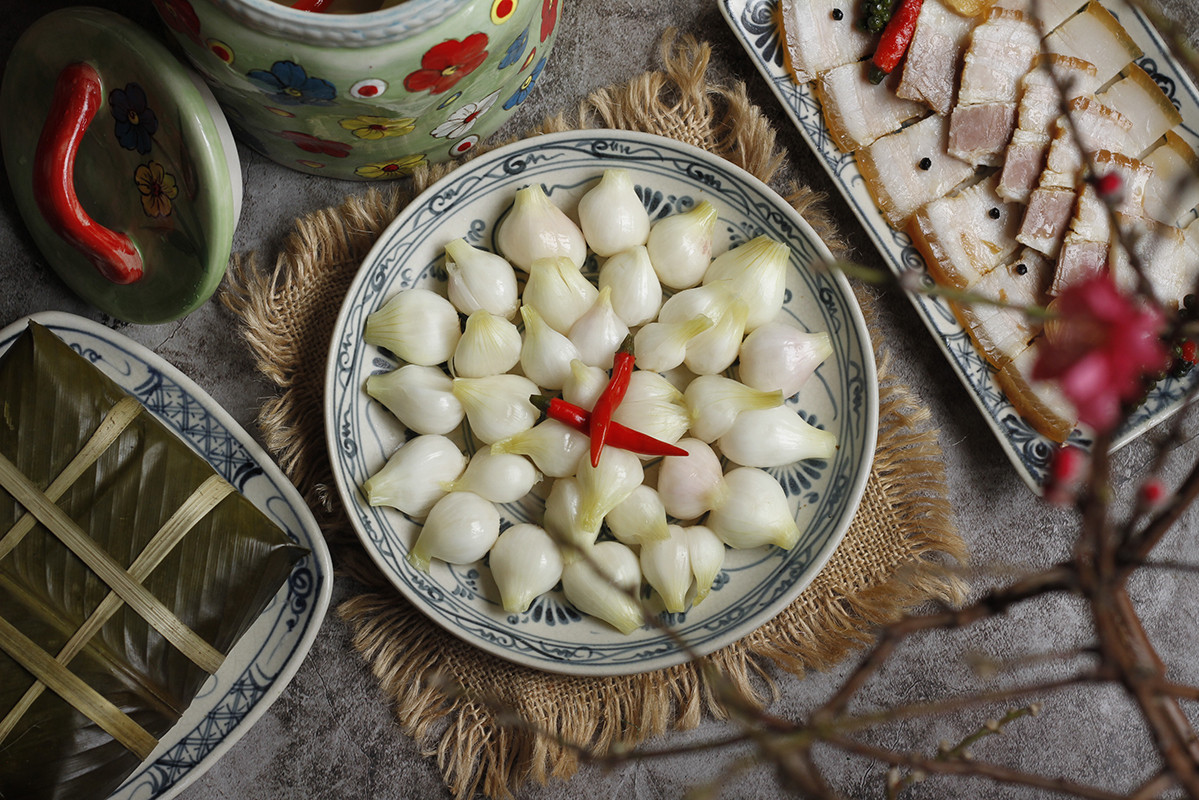
According to ancient beliefs, the inclusion of shallots and onions during Tet signifies wealth and prosperity.


